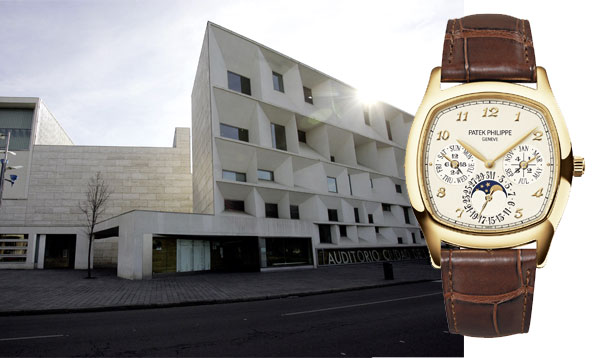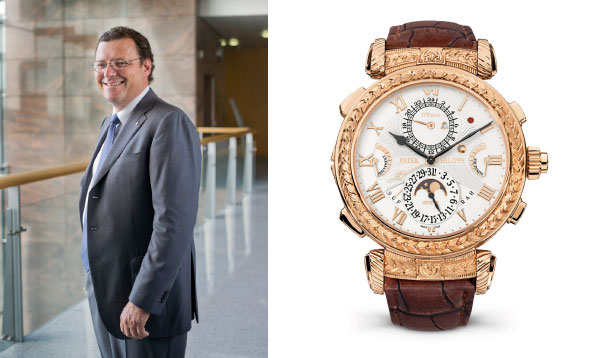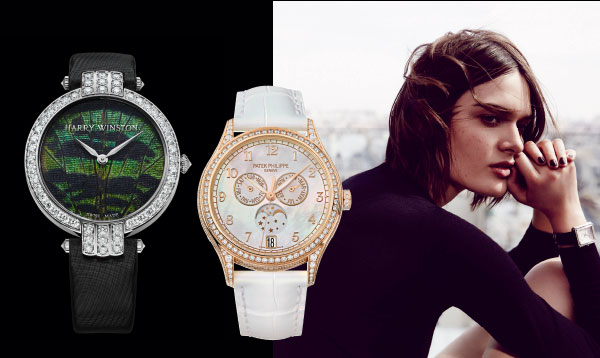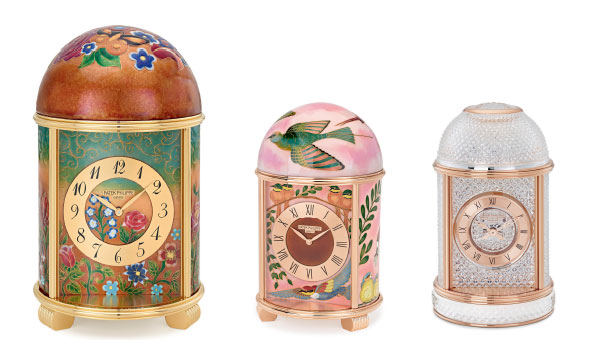
Ultra-thin self-winding perpetual calendar 5940
Movement : ultra-thin mechanical self-winding, Calibre 240, 48-hour power reserve Case : yellow gold Dimensions : 44.6x37mm, 9.25 mm thick Functions : hour, minute, date, jour, month, leap year, pointer-type 24-hour indication, moon phase Case-back : sapphire crystal Water resistance : 30m Strap : matt black square-scale alligator leather
A past master in the art of creating ultra-thin self-winding perpetual calendars, Patek Philippe revisits some of its classics with this particularly elegant model. This time, the Geneva-based manufacturer has opted for a yellow gold “cushion shape” inspired by the Art Deco movement – of which the pure and imaginative language has produced designs radiating an aura that is still vibrantly alive. Characterised by highly contemporary dimensions, this model with its resolutely masculine elegance features appealing dynamic lines and delicately curved sides that melt into seamlessly integrated strap lugs. On the mechanical side, virtuosity is also the keynote: ultra-thin Calibre 240Q has established itself as a masterpiece of technique, aesthetics and precision. These qualities are accentuated by a grained cream-coloured white dial that makes a perfect match with the shade of yellow gold. The calendar displays are arranged on three subdials: the day and the 24-hour indication at 9 o’clock; the month and the leap year at 3 o’clock; and the pointer-type date display and moon-phase aperture at 6 o’clock. A readable and useful model that makes the shaped case a modern and timeless must-have.
Its architectural alter ego: the Auditorio Ciudad de León, in Spain, by architects Emilio Tuñón and Luis Mansilla
Located in north-west Spain, about 330 km from Madrid, the Concert Hall nestles into the heart of the historical centre of the town of Léon. The activities of the cultural centre have been spread between two building wings: the largest accommodates the spacious auditorium, and the second small one houses the exhibition rooms. This division of the built volumes places the smaller in the foreground of the composition, at the access point to the site, while positioning the more voluminous auditorium in the background. The architects have used this means of creating the impression of the presence of a small-sized construction in this spot.
Built near the San Marcos church, a building from the first Spanish Renaissance marked by the predominance of opulent decorative motifs, the new construction has an austere appearance. The visual confrontation with the older building is arranged via the façade of the Auditorium where the exhibition rooms are installed. This contiguous layout has been achieved by putting in place an envelope that synchronises the assembly of several windows of varying sizes which are designed to simultaneously shed light on the interior. The result is a façade resembling a huge sculpture that pays tribute to the concept of “see and be seen”.
Like the Auditorio Ciudad de León, the ultra-thin Patek Philippe 5940 watch features various items of information arranged on the dial which assert their presence and relegate to the background the perception of the watch as a whole : a subterfuge that transforms the straightforward instrument into a more refined accessory that questions the value of thef fundamental use of the object.






